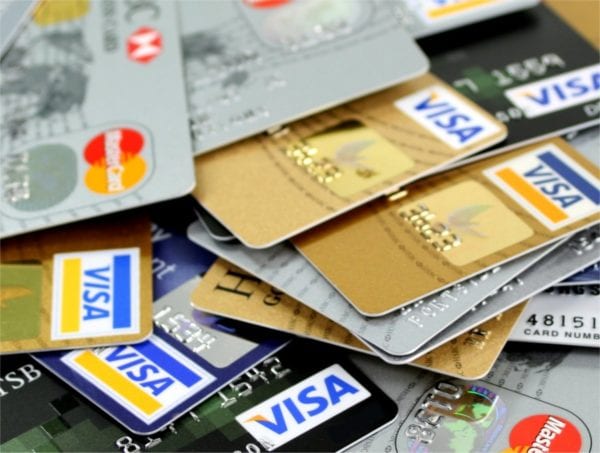A Complete Guide to Cash Back Credit Card Rewards for Small Businesses

Table of Contents
Credit can be one of your most steadfast allies, or a lifelong thorn in the side. Savvily utilizing credit can dramatically change your life, the longevity and opportunities presented to your business, and more. Small businesses in particular deal with cash flow issues. Choosing the right card (and using it well) can help your small business make a one time purchase, save money by purchasing in the right denominations, and earn rewards over time.
While most of us undoubtedly have some experience with credit cards. Recent years have brought about a whole new level of credit power user. Many of these individuals (and organizations) know how to make access to greater liquidity literally free. And all it takes is some forethought, some discipline, and the right guides.
In this guide we’ll look at some “best practices” as described by masters of credit as it relates to small business. We’ll tackle the following questions and topics to hopefully get you caught up with many of the most accessible perks and tactics for utilizing small business credit the right way.
In This Guide:
How Does Business Credit Work?

Put succinctly, business credit is the ability of a for-profit organization to qualify for financing. For most small businesses it’s actually not that different than for individuals. But depending on how your business is incorporated, which field it is in, and the size of your business you may need to jump through slightly different “hoops” than individuals.
As we’ll dive into a little more deeply in the following section, many of the most prominent steps in establishing and building credit for a small business are the same as building personal credit. These include:
- Opening accounts
- Staying up-to-date on all payments
- Utilizing below a certain threshold of your total credit
- Creating official documentation to prove levels of profitability
Obtaining credit is an essential component to many small or new businesses. Remember, 29% of small businesses fail because they run out of capital. This is an area where obtaining a credit card early in your business’s life can help to directly remedy. That’s close to one third of all businesses that don’t fail because there isn’t demand, or because their idea is bad. They fail because they didn’t properly utilize all capital available to them.
As a new, aspiring, or learning small business owner, you also should know that you shouldn’t be afraid of debt. Debt is — more often than not — part of the process of growing your business.
Some pertinent facts showing the role of debt in small businesses include:
- 43% of small businesses applied for a loan last year
- 91% of small businesses that applied for loans received at least some capital
- The average Small Business Association (SBA) loan is slightly over $100,000
- 7/10 small businesses do have debt that is outstanding
- 36% of small businesses were denied part of their loan request due to unestablished or bad credit
Establishing Credit For Your Small Business

As you can see from the stats above, establishing credit is a crucial part of many business ventures. Most businesses that seek out financing do so to get started or to chase after a new opportunity. While we aren’t advocating entering debt for the sake of it. From one small business owner to another, it’s important to note that small business is a normal part of countless successful small businesses.
So if you’re interested in gaining credit for your small business, where do you start?
While this may vary slightly from state to state, typically the following steps are required to establish your businesses credit:
- Set up shop: not literally, but you do need to have established a bank account for your business, have a phone number, and have a physical location on file. Extra points for already having an established presence in your community or online through reviews and press coverage.
- Open a business credit file: this is the moment that officially opens your business to credit. And it’s all in the name. One of the quickest ways to get this process moving is to literally apply for a file with the three major credit reporting bureaus: experian, equifax, and dun and bradstreet.
- Establish credit with vendors and suppliers: oftentimes this informal type of credit in the form of not needing to pay up front for goods or services (or gaining better offers) can translate into credit with big banks (with the proper documentation).
- Incorporate: this often comes before setting up shop. But legally separating yourself from your business (even if still just a sole proprietorship LLC) allows you to separate your finances and build a credit history specific to your business.
- Pay All Bills With Your Business Account: this may be a no brainer if you’ve fully separate your finances. But make sure that it’s your business account that’s paying for everything related to your business. Recurring payments, financing, and regular bills paid on time will all help to get your credit rolling.
- Periodically check out your credit: one in four small businesses have reported an error on their credit reports. It happens all the time. Be sure to periodically check on your credit and to report any blemishes that aren’t based on fact.
Of course, your credit won’t really jump into exceptional territory until you have a commercial credit history. That is, until you’ve applied for some financing in the form of a loan or credit card, and have routinely paid your bills. That leads us to the next step in building up your credit, getting your first small business credit card.
Benefits of Small Business Credit Cards

As an individual you may have plenty of experience with credit cards. And if that’s the case you likely know there are many, many types of credit cards. A few of the most popular categories of credit cards include:
- Cash Back Credit Cards
- Low APR Interest Credit Cards
- Travel Rewards Credit Cards
- Hotel Rewards Credit Cards
- Gas Rewards Credit Cards
- And Secured Credit Cards
While you’ve likely heard or used some of the above credit card types, there are distinct benefits to pursuing business-specific credit cards. Some specific benefits of business credit cards include:
- Business credit cards typically have higher credit limits (oftentimes $50,000+)
- Business credit cards typically provide the ability to control how much individual employees can use the card (limiting unauthorized spending)
- Business credit cards are only associated with your business, building credit more quickly than personal credit cards
- Business credit cards can typically be found with all of the major benefit types (cash back, travel rewards, gas rewards, and so forth)
- Business credit cards typically have a wider range of interest rates than consumer credit cards (this can be good or bad)
- Business credit cards can have business-specific grace periods
In short, business credit cards — when properly utilized — can help you to grow your business and provide it with more cash in the future. They also keep your individual credit out harm’s way, depending on how your business is structured. For many small businesses, the higher credit limit and business-specific credit boosts in and of themselves are great reasons to apply.
What to Look for in a Cash Back Credit Card for Small Businesses

While there are obviously all sorts of business-centered rewards credit cards, we’re going to focus on the most widely used, the cash back rewards credit card for business.
For the same reason that cash back rewards are commonly utilized by non-business individuals, cash back rewards can be one of the smartest perk schemes you can utilize with credit as the cash back is not limited to one type of purchase. This gives you greater flexibility and more opportunity to actually use your rewards (a large percentage of rewards from credit cards actually go unused).
If you’re shopping for a cash back business credit card, know that there are a number of perks that are particularly great for small business. Below are some of the main features you should look out for when searching for a cash back small business credit card.
Initial spending bonuses are offers that stipulate that if you spend $X within the first Y months in which you’ve had the credit card, that you will get a bonus. These bonuses can range from $500 to several $1,000’s. With typical stipulations that you must spend several $1,000’s of dollars on the card in the first 3-5 months. The key to properly utilizing this feature is to utilize your credit card for the amount required while also paying the credit card 100%. This ensures you don’t cancel out the bonus bucks with interest or fees over time.
Lack of an annual fee is an important benefit to weigh the pros and cons of. Sometimes cards with annual fees can provide lower interest rates or additional perks. If you expect to regularly maintain a regular balance, a lower APR with the inclusion of a $100 annual fee may actually save you money. If you expect to rarely use your card at all, a substantial annual fee is wasted money over the long run.
Free employee cards are one way to both segment spending, reduce communication errors (such as trying to find out “who had the card last”) and save you a few dollars. Additional employee cards are available from most major carriers but sometimes do require a nominal fee (or even additional annual fees).
Primary car rental insurance for all corporate users of the credit card can be a great money saver. It’s easy to add $100’s to any rental car purchase by buying the insurance offered at the rental center. If your business routinely utilizes rental cars this can be the one major perk that makes the whole card worth it. Make sure that the primary car rental insurance extends to any member of the business utilizing the card for business travel.
Introductory APR refers to offers that provide lower than normal interest rates for a set period of time. Common introductory APR offers include 0% APR for the first year of the credit card. Occasionally, credit cards may offer lengthier introductory APR. More commonly, there’s fine print that limits your introductory APR, so make sure to read all the details of what exactly you’re signing up for.
What you get cash back for is one of the most important aspects to consider with a cash back business credit card. This may involve you coming up with a plan for exactly what the credit card will be used for. While cash back on all purchases is common, the percentage of cash back is commonly lower in these scenarios. Common business purchase categories eligible for higher cash back percentages include internet purchases, telecommunications purchases, travel purchases, equipment purchases over a certain amount, office supply purchases, dining purchases, and gas purchases.
The ability to choose cash back categories is offered by some cards. If you find a card that you like many of the features of but the cash back rewards don’t line up with what your business spends money on, see if the card carrier offers a similar card that allows you to choose between major categories. Commonly these cards offer a lower cash back rate on all purchases, and then one category of purchase where you’re receiving additional rewards.
Foreign transaction fees may or may not apply to your business. But if you’ve ever been stung by unexpected foreign transaction fees, they can quickly add up. The most common foreign transaction fee rate is 3% on all purchases made in an international nation. But rates at ATMs — and depending on the nation you’re in — can jump to double that.
Card carrier-specific benefits are benefits available to all card holders (often tiered by the type of card they hold). These can include concierge services, free roadside assistance, access to exclusive food, dining, and sporting events, access to events with restricted entrance, and access to locations that may say they have no more rental properties available to the general public. All major credit card carriers typically offer their own set of benefits including Visa, Mastercard, and American Express.
The ability to upgrade or downgrade between tiers can be used to strategically gain benefits when you need them and then avoid unnecessary fees when you don’t. Some carriers allow you to enter new tiers of cards once you’ve spent a certain amount within a year. Others will base the tier you’re allowed to gain based on your history with the card carrier or credit score. But the important aspect here is that you make sure you have the ability to elect to upgrade or downgrade tiers when they’re available.
The card has “tiers” is a similar point to the last. But it is an important aspect of strategically using your cash back reward credit card. While the benefits of different credit card tiers vary greatly, higher tiers will commonly come with higher credit limits, additional stipulations that can boost cash back, and additional concierge or card carrier-specific benefits.
You choose where you cash goes when you recieve cash back. Some cash back cards only allow you to apply your cash back to your balance. Some only allow you to use cash back with specific merchants. Some cash back cards offer both of those options as well as the ability to deposit cash back rewards directly to your checking account. While this may not be the most important aspect of your card, if you’re heavily and strategically using your cash back categories this is important.
The ability to buy above your credit limit can be a useful benefit. While presumably you’ve been assigned your credit limit for a reason, there are times when spending beyond your official credit limit may not be a bad idea. Keep in mind that money above and beyond your credit limit (including cash advances) will often come with a higher interest rate. But in specific or exceptional circumstances this benefit can be a game changer (just pay it off!).
Additional boosts can include lump sum rewards that aren’t part of an introductory offer and that are triggered when you spend a certain amount on the card. For example, some cash back business cards offer $1,000-$2,500 in automatic cash back (beyond your normal percentage cash back) once businesses utilize $50,000 on their credit card within a given year.
A grace period is commonly present on nearly every business or non-business credit card. But it’s not always included. By grace period we mean that you can utilize a credit card and then pay off your balance within (most commonly) 21 days and purchases within that period that were paid off won’t be charged interest. Cards that don’t offer grade periods are essentially charging you interest the second you purchase on the card. If this is the case there better be some serious rewards or other perks to make the card worth it.
A balance transfer option is important to pay attention to if you already have one credit card and want to essentially refinance that debt. Though not exceedingly common among business cash back reward cards, balance transfer cards are to some extent available for cash back reward business cards. These cards offer you the ability to transfer the balance of another card (presumably with a higher interest rate) and often include an introductory low or 0% interest rate.
A fixed rate card can be hard to find today, but many smaller banks and local credit unions do offer them. The difference, with a variable rate APR credit card your interest will fluctuate throughout the year depending on the rates that the Federal Reserve sets. Sometimes rates can fluctuate by as much as 10%. If you’re looking for something a bit more dependable, search out a fixed rate card that also offers cash back rewards (they are out there!).
No or low fees can be a consideration for a credit card. Although if you’re opening an account already worried about fees you may want to take some time to assess whether your credit utilization plan is actually responsible. Areas where fees can quickly add up include cash advance fees, late fees, international use fees, annual fees, and balance transfer fees.
Summing it all up
We’ve worked through a number of reasons why a business credit card — and particularly a cash back rewards business credit card — can be a great acquisition for your small business. To name the most prominent of these reasons, they help you establish business-specific credit quickly, can help you avoid running out of capital (one of the most common reasons small businesses fail), and can help you recoup some of the money you would have spent anyway.
It almost goes without saying, but the key aspect to utilizing credit well is to use it responsibly.
The best cash back business credit card rewards in the world won’t make up for a card that’s routinely not paid on time or that holds high balances over a long period of time. That’s how credit card carriers stay in business. So don’t be “that guy” and find a way to use the many, many unique perks of available cash back business credit cards to your advantage.
This brings us to our final point. Come up with a plan for exactly what you want to use your credit card for. As seen in the previous section of this guide, there are tons of potential strategies that can net you 1%,2%, even 5-6% cash back on routine purchases. There are ways to boost cash back by several $1,000’s a year without incurring interest payments or annual fees. This requires discipline and a clear game plan. But it’s money sitting on the table that many smart small businesses can’t avoid using.







